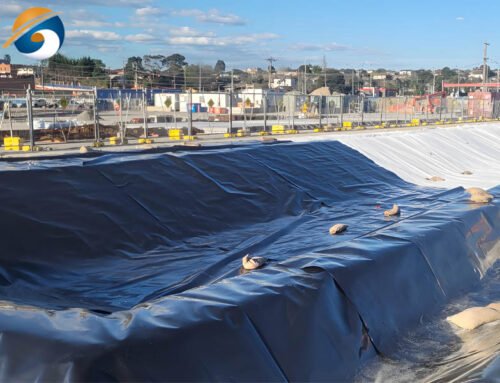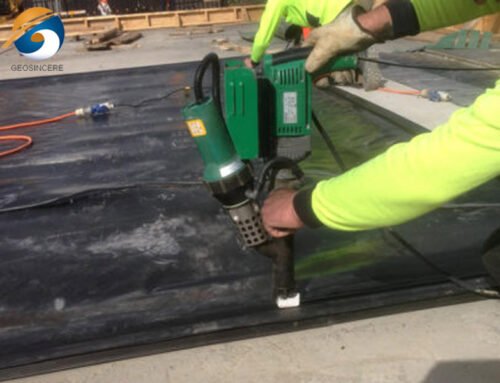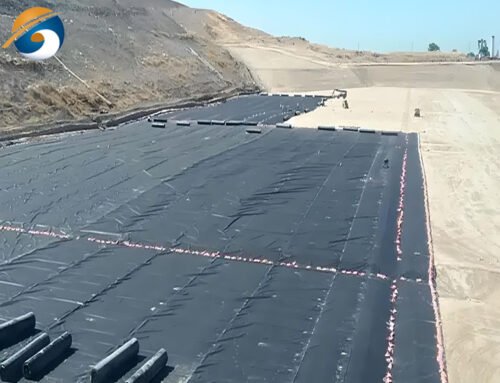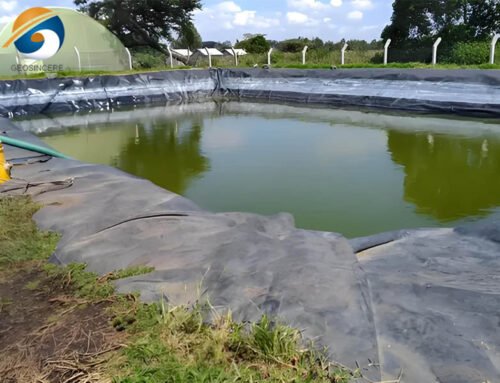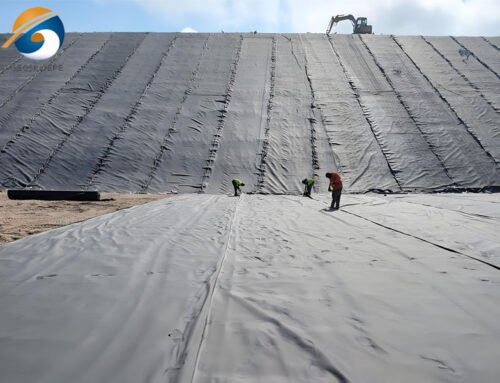The very ground beneath our feet, while seemingly solid, is often a dynamic and unpredictable element in construction and civil engineering. Weak, unstable soil can lead to catastrophic failures, from sinking pavements to collapsing slopes. For centuries, engineers battled these challenges with brute force—digging deeper, using more aggregate, or constructing heavier retaining structures. However, a quiet revolution has taken root in the form of a synthetic textile: geotextile fabric. Geotextile Fabric for Soil Stabilization material has become an indispensable tool for soil stabilization, transforming weak ground into a stable, reliable foundation through the principles of separation, reinforcement, and filtration.
2. Defining Geotextiles and Their Core Functions
At its most basic, a geotextile is a permeable synthetic fabric, typically made from polypropylene or polyester polymers. It is designed to interact with soil and rock to enhance the performance of civil engineering projects. When it comes to soil stabilization, geotextiles perform three critical, interconnected functions:
2.1 Geotextile Fabric for Soil Stabilization – Separation
This is the primary and most intuitive role. In applications like unpaved roads or railway beds, a layer of clean, strong aggregate is placed on top of a soft subgrade soil. Without a separator, the dynamic forces of traffic cause the aggregate to punch down into the soft soil, while simultaneously allowing the fine soil particles to migrate up into the aggregate layer. This intermixing, known as “pumping,” compromises the structural integrity of both layers. The geotextile acts as a physical barrier, preventing this intermixing and preserving the strength and drainage capacity of the aggregate. This dramatically extends the service life of the road or platform.
2.2 Geotextile Fabric for Soil Stabilization – Reinforcement
Geotextiles, particularly the stronger woven and nonwoven varieties, possess high tensile strength—a property that soil inherently lacks. By placing a geotextile within the soil mass, it can absorb tensile stresses, effectively creating a reinforced soil composite. This principle is analogous to steel rebar in concrete. The friction between the soil and the fabric allows stresses to be transferred, enabling the construction of steeper, more stable slopes, embankments, and retaining walls that would otherwise be impossible with soil alone.
2.3 Geotextile Fabric for Soil Stabilization – Filtration and Drainage
Geotextiles are engineered to be permeable, allowing water to pass through while retaining soil particles. In stabilization scenarios where water pressure (pore water pressure) can weaken the soil, the geotextile acts as a filter. It is placed adjacent to the soil, and as water tries to flow out, the fabric prevents the loss of fine soil particles that would lead to erosion and piping failures. This controlled filtration allows for proper drainage, reducing water pressure within the soil mass and thereby increasing its stability.
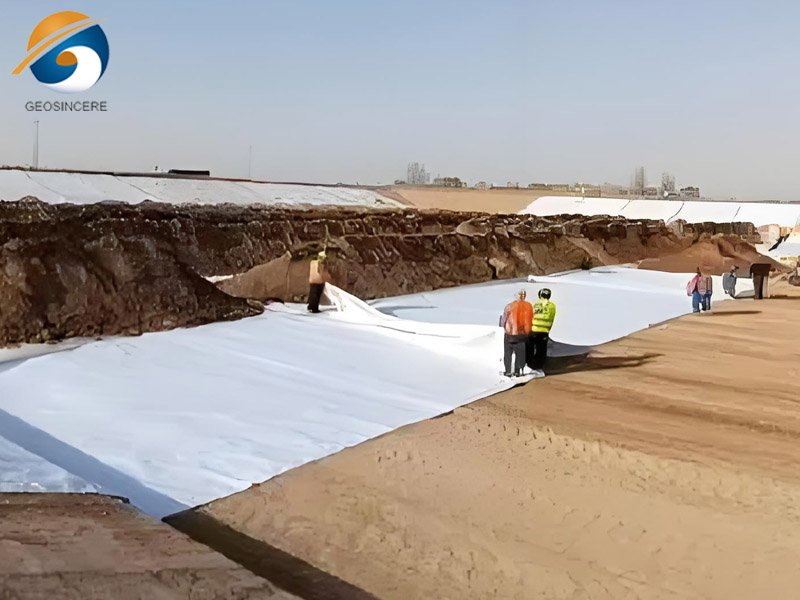
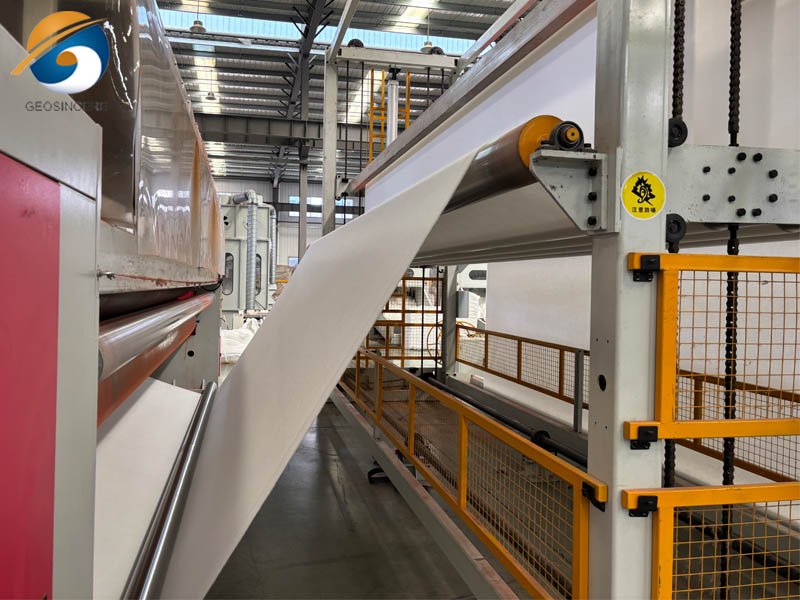
2. A Tale of Two Textiles: Woven vs. Non-Woven Geotextiles
Not all geotextiles are created equal. The manufacturing process dictates their physical and mechanical properties, making them suitable for specific stabilization tasks. The two primary categories are woven and non-woven geotextiles.
Geotextile Fabric For Soil Stabilization – Woven Geotextiles
These are manufactured by interlacing yarns or tapes in a regular pattern, much like traditional clothing fabric. This process results in a material with high tensile strength and low elongation (stretch). Their pores are typically more uniform and smaller. Woven geotextiles excel in **reinforcement** applications. They are the go-to choice for building reinforced soil walls, steep slopes, and for stabilizing very soft subgrades under heavy loads where high tensile strength is paramount. Their separation function is also excellent, though their filtration flow rates can be lower than their non-woven counterparts.
Geotextile Fabric For Soil Stabilization – Non-Woven Geotextiles
These are created by randomly distributing synthetic fibers and then bonding them together through mechanical (needle-punching), thermal, or chemical means. This results in a thick, felt-like fabric. Non-wovens are characterized by high permeability and strain (they can stretch significantly). Their primary strengths lie in **separation, filtration, and drainage**. They are ideal for use behind retaining walls, in subsurface drainage systems, and for separating subsoil from aggregate in situations where water flow is a primary concern, such as under roadways in wet climates.
3. The Geotextile Fabric For Soil Stabilization: How Geotextiles Actually Work
Understanding the core functions is one thing; visualizing how they mechanically stabilize soil is another. The process is a synergy of physics and material science.
When a load is applied to unstabilized soil (e.g., a truck driving on a gravel road), the soil deforms laterally in a shear failure pattern. The aggregate sinks, and the soil heaves up at the sides. When a geotextile is introduced, it intercepts these shear planes. As the soil attempts to move laterally, it mobilizes friction along the vast surface area of the geotextile. The fabric, with its high tensile strength, resists this movement, effectively “holding” the soil in place. This confinement effect redistributes the load over a wider area of the subgrade, reducing the point pressure and preventing excessive deformation.
In essence, the geotextile puts the soil into a state of “membrane tension.” It behaves like a taut membrane that supports the load from above. This mechanism is why even a thin layer of fabric can allow construction on extremely soft soils like peat or clay, which were previously considered unbuildable without extensive and expensive soil replacement.From Theory to Terrain: Key Applications in Soil Stabilization
The practical applications of geotextiles in stabilization are vast and touch nearly every aspect of infrastructure development.
- Unpaved and Paved Roads: This is the most common application. A geotextile placed between the soft subgrade and the road base aggregate provides separation and reinforcement, reducing the required depth of aggregate by up to 50% and significantly extending maintenance cycles.
- Parking Lots and Construction Sites: Temporary access roads and laydown areas on unstable ground are made feasible and durable using geotextiles, preventing construction vehicles from getting bogged down.
- Embankments and Slopes: Building embankments over soft foundations or constructing steep slopes is a classic geotechnical challenge. Layers of geotextile placed within the fill provide the necessary tensile strength to maintain stability and prevent slope failure.
- Reinforced Soil Retaining Walls (MSE Walls): Mechanically Stabilized Earth (MSE) walls use layers of geotextile as tensile elements to create vertical or near-vertical walls. This is a cost-effective and efficient alternative to traditional concrete retaining walls.
- Railway Construction: Geotextiles stabilize the track bed, separating the ballast from the sub-ballast and subgrade, which reduces settlement and maintains track alignment.
4. Choosing the Right Geotextile Fabric For Soil Stabilization: Critical Properties and Specifications
Selecting the appropriate geotextile is not a matter of guesswork; it is a precise engineering decision based on specific properties. Key design properties include:
- Grab Tensile Strength (ASTM D4632):Measures the force required to break a fabric sample. Crucial for reinforcement applications.
- Puncture Strength (ASTM D4833): Assesses the fabric’s resistance to penetration by sharp objects (like rocks), ensuring it survives installation.
- Trapezoid Tear Strength (ASTM D4533):Evaluates the resistance to tearing forces, important for durability.
- Apparent Opening Size (AOS) or O90 (ASTM D4751):This indicates the approximate largest pore size in the fabric. It is the primary factor in filtration design, ensuring the fabric retains the necessary soil particles while allowing water to pass.
- Permittivity (ASTM D4491): A measure of the fabric’s ability to allow water to flow through it in a direction normal (perpendicular) to its plane. Critical for drainage design.
- UV Resistance: The fabric’s ability to withstand degradation from sunlight before being covered, which is vital for handling and storage on-site.
An engineer will analyze the soil type (grain size distribution), the loading conditions, and the hydraulic requirements to specify a geotextile with minimum values for these properties.
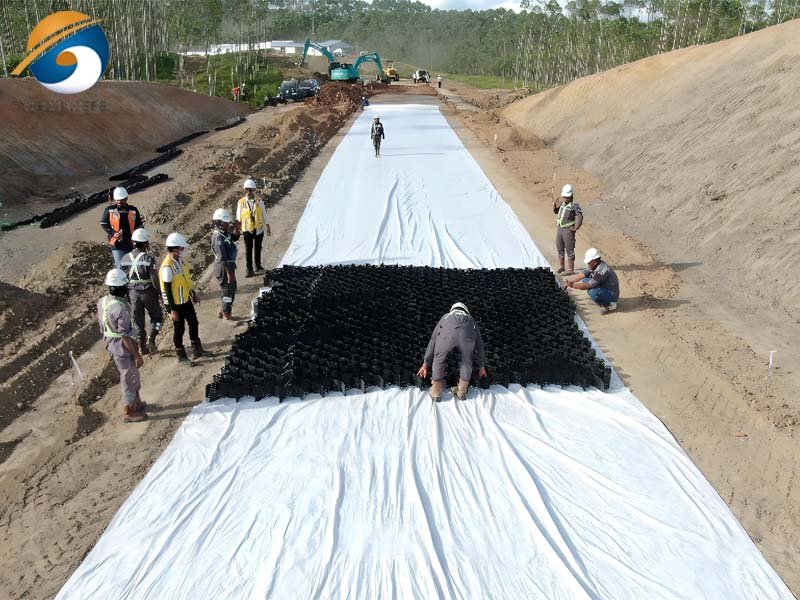
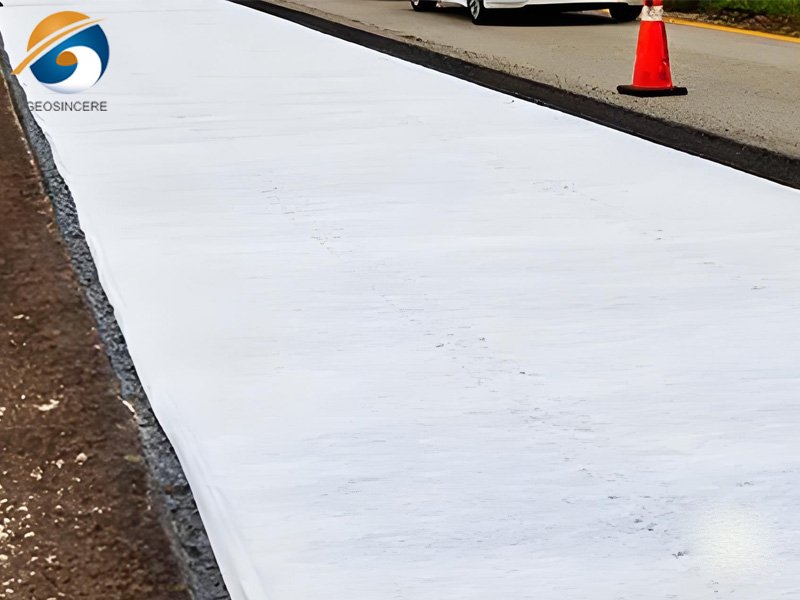
5. The Blueprint for Success: Proper Installation Guidelines
The best geotextile will fail if installed incorrectly. Proper installation is a multi-step process:
- Site Preparation:The subgrade must be graded to the desired contour and compacted. All sharp objects, debris, and vegetation that could puncture the fabric should be removed.
- Geotextile Placement:Rolls of geotextile are laid out manually or with machinery along the prepared subgrade. The fabric should be laid smoothly without wrinkles but also without excessive tension.
- Seaming and Overlap:Adjacent rolls must be connected. This is typically done by overlapping the rolls. The required overlap (often 12 to 36 inches) depends on the subgrade strength and the application. On critical projects, seams may be sewn or welded together.
- Anchorage: On slopes, the top end of the geotextile roll must be anchored in a trench to prevent it from being pulled down during fill placement.
- Backfilling:The initial layer of fill material (usually aggregate) should be placed from the center of the roll outwards to avoid creating wrinkles. The drop height should be limited to prevent damage, and lightweight equipment should be used for initial spreading.
- Compaction:Compaction of the fill material can begin once a sufficient cover (typically 6-12 inches) is in place to protect the geotextile from direct contact with machinery.
We are seeing the development of:
- Smart Geotextiles: Fabrics with integrated sensors to monitor strain, temperature, and moisture in real-time, providing early warning of potential failures.
- Biodegradable Geotextiles: Made from natural fibers like coir or jute, these are used for temporary erosion control on slopes where long-term synthetic presence is undesirable.
- Nanotechnology-Enhanced Geotextiles: Incorporating nanoparticles to improve properties like UV resistance, strength, or even to give the fabric contaminant-absorbing capabilities for environmental remediation.
In conclusion, geotextile fabric is far more than a simple sheet of plastic. It is a sophisticated, engineered solution that has fundamentally changed our relationship with the ground. By harnessing the simple yet powerful principles of separation, reinforcement, and filtration, it allows us to build safer, more durable, and more sustainable infrastructure on a foundation that was once considered hopeless. It is, quite literally, the hidden fabric holding our modern world together.
6. How to Choose the reasonable supplier:
GEOSINCERE has been keeping on investing in technological innovation, manufacturing facilities improvement and turnkey engineering abilities. We have invested 10 million dollars into our manufacturing factory which is equipped with state-of-the-art automatic production lines to manufacture high quality Geosynthetic clay liners and other geosynthetics with optimized processes. Our extensive lines of geosynthetics products are well known for their ensured quality, high performance, excellent durability and best cost effectiveness.
GEOSINCERE brand Geosynthetic clay liners and other geosynthetics products and solutions can meet your requirements by our solid technologies, innovative engineering solutions and excellent customer services. GEOSINCERE always tries our best to solve the most complex civil, mining and environmental challenges with our innovative and high performance geosynthetic products. Quality assurance, factory price and fast delivery time are our competitive advantages.

